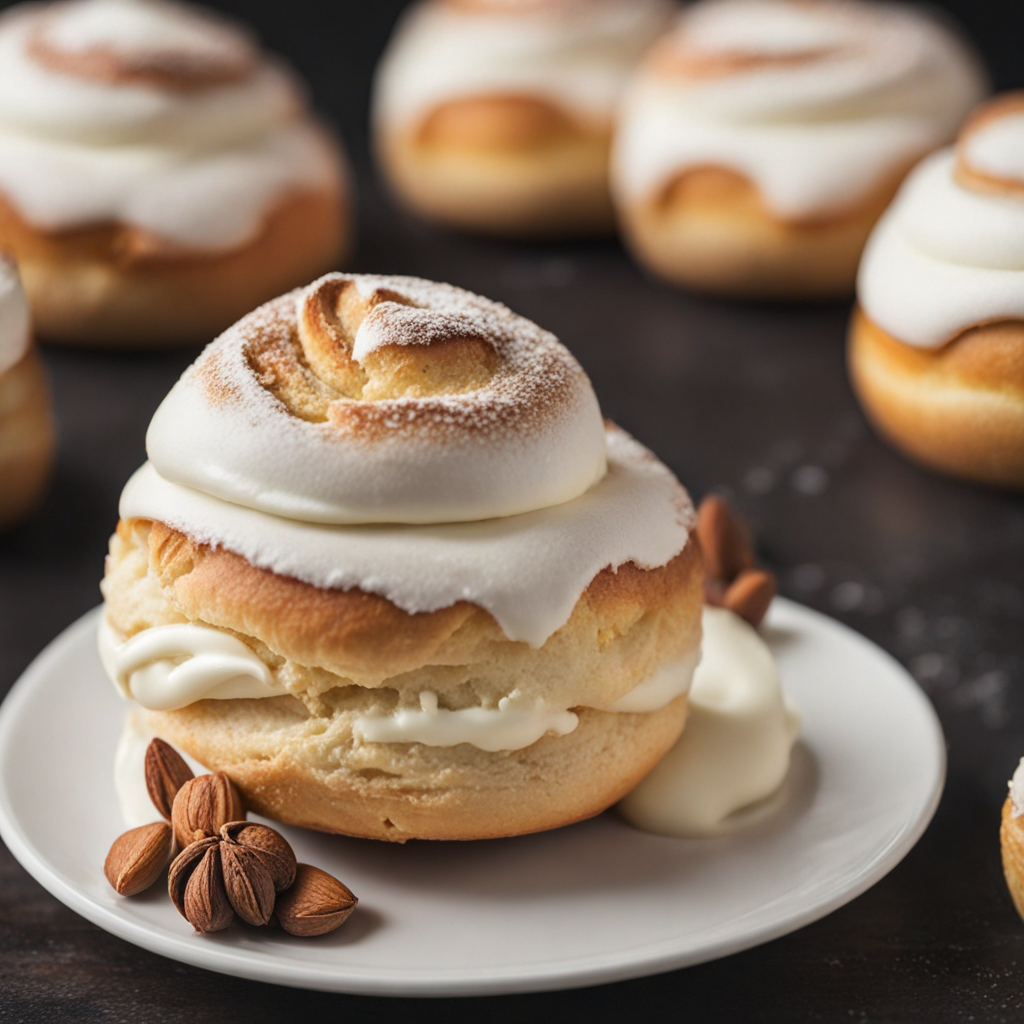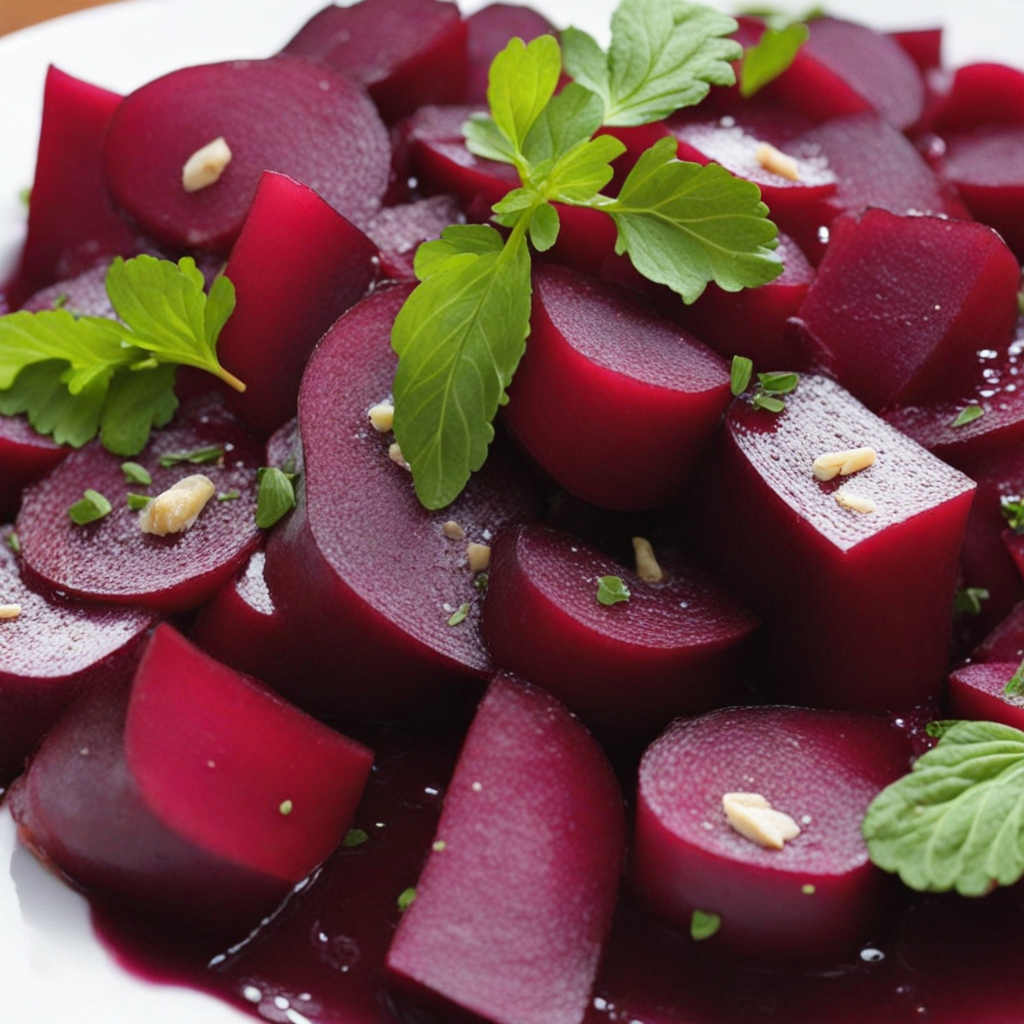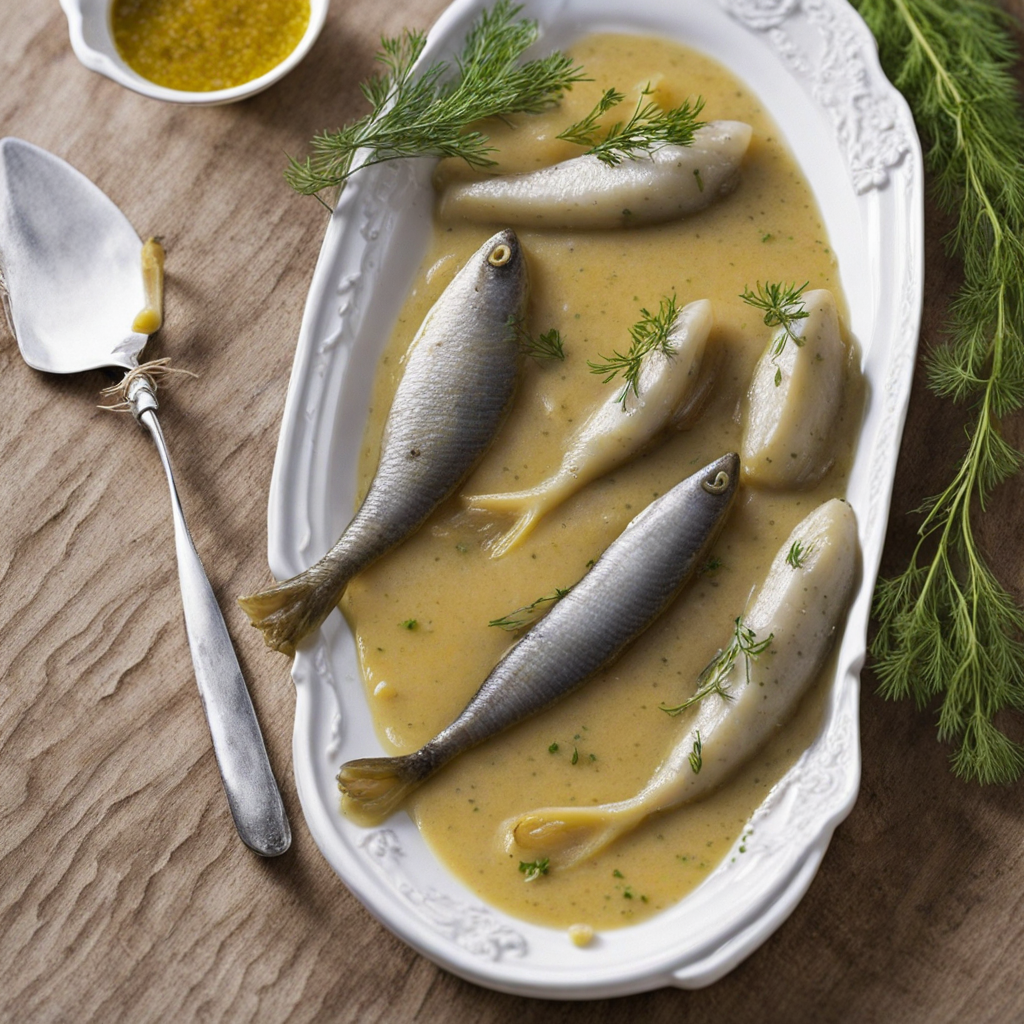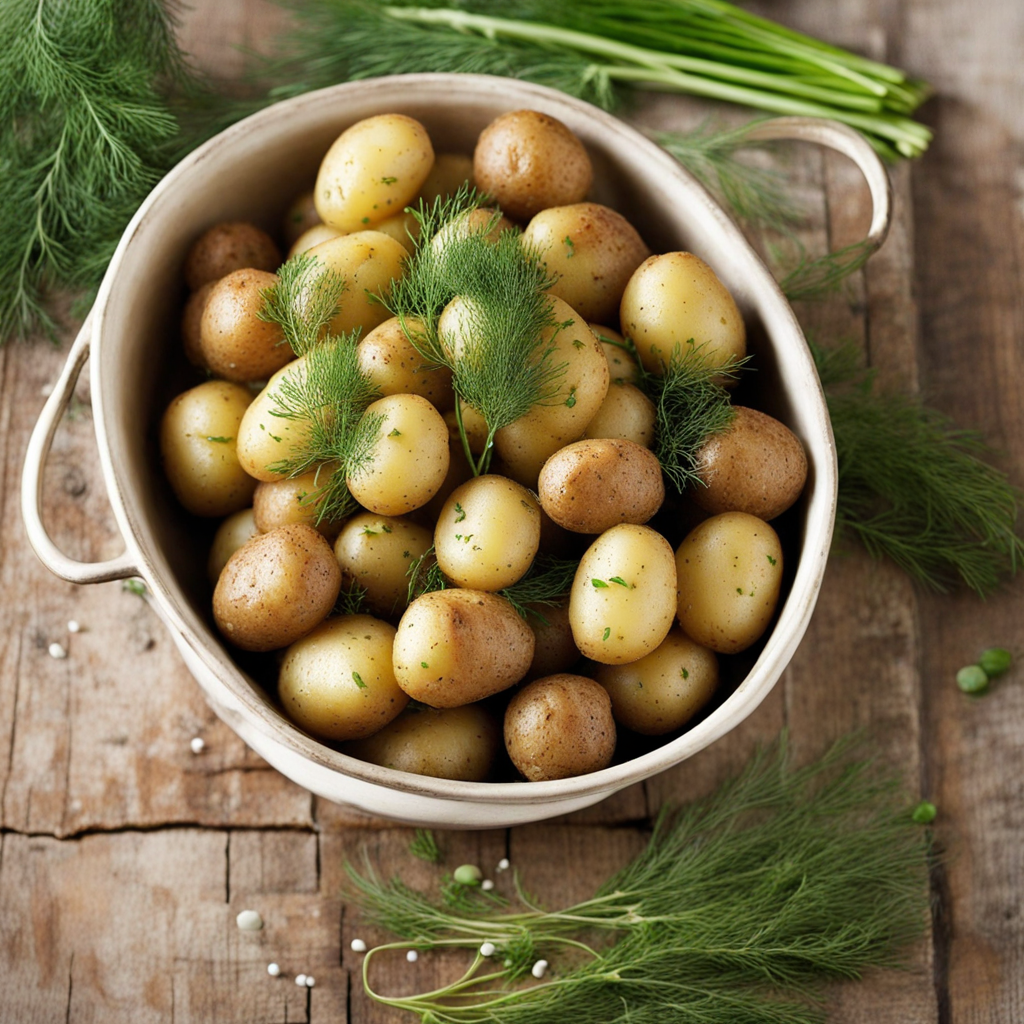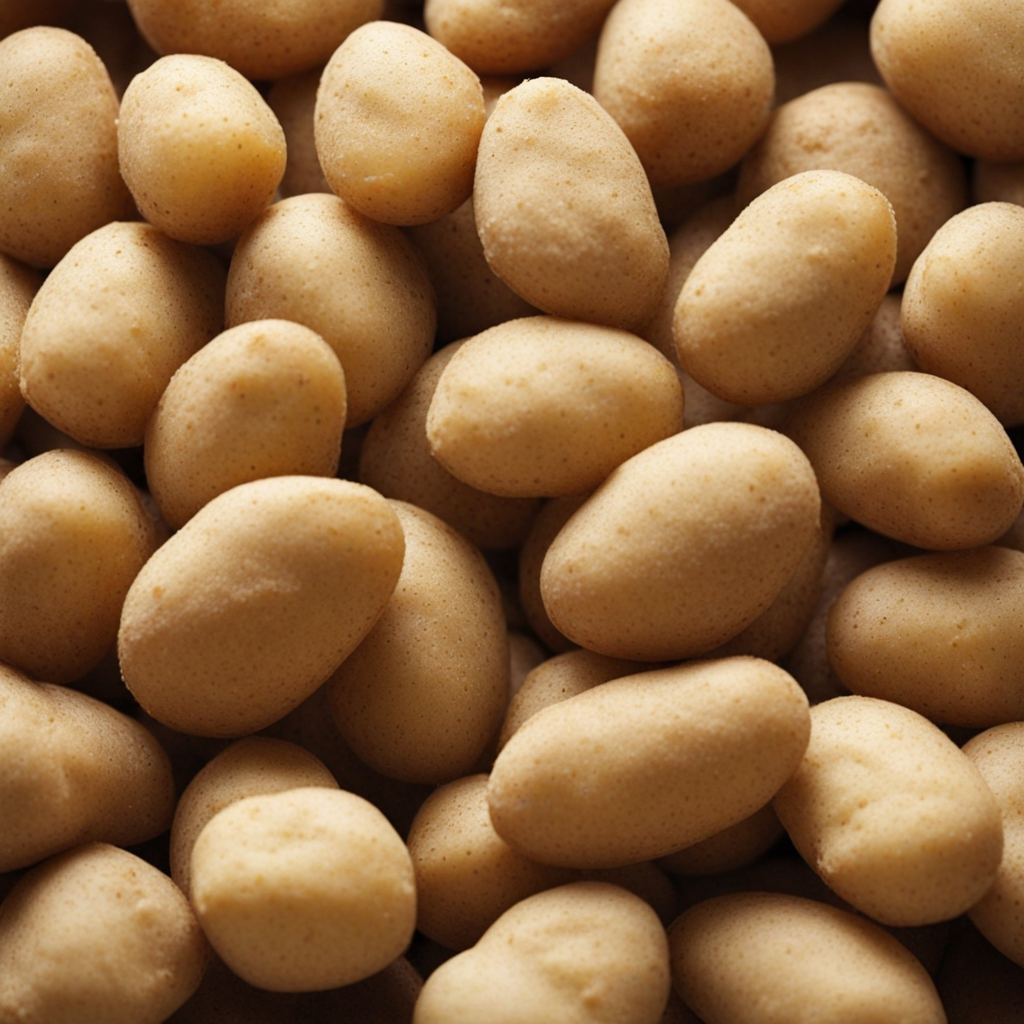Swedish Semla
Swedish Semla is a delightful pastry that captures the essence of traditional Swedish flavors and textures. This beloved treat consists of a soft, cardamom-spiced bun that is light and airy, offering a perfect foundation for the indulgent filling. The top of the bun is typically sliced off, creating a lid that can be set aside for later, while the hollowed-out center is filled with a luscious mixture of almond paste and whipped cream. The combination of the sweet almond flavor and the rich, fluffy cream creates a heavenly contrast that is truly irresistible. Traditionally enjoyed during the lead-up to Lent, Semla has become a year-round favorite for many Swedes. The bun is often dusted with powdered sugar, adding a touch of elegance to its appearance. When you take a bite, the flavors meld together beautifully, providing an experience that is both comforting and satisfying. The hint of cardamom in the bun elevates the taste, bringing a warm spice that complements the sweetness of the almond and cream. Enjoyed with a cup of coffee or hot chocolate, Semla is not just a dessert but a ritual for those who partake. The experience of savoring this pastry is enhanced by its cultural significance, as it carries with it a sense of tradition and celebration. Whether enjoyed at a café or made at home, Swedish Semla invites you to discover a unique combination of flavors that encapsulate the warmth and charm of Swedish cuisine.
How It Became This Dish
The Delicious Journey of Semla: A Swedish Culinary Tradition Origins: The Birth of Semla The story of Semla, a beloved Swedish pastry, begins in the Middle Ages, around the 16th century. The word "semla" derives from the Latin word "simila," meaning fine wheat flour, which was a luxury in medieval Sweden. Initially, semlor were simple wheat buns made with enriched dough, typically enjoyed by the Swedish nobility during Lent. These buns were often flavored with cardamom, a spice that reflects the trade connections and cultural exchanges of the time. As culinary practices evolved, so did the semla. By the 18th century, it transformed from a humble bread roll into a sweet treat. The addition of almond paste—made from ground almonds and sugar—marked a significant change in its preparation. This innovation is believed to have been influenced by the growing popularity of almonds in European cuisine, especially in desserts. Cultural Significance: Semla in Swedish Society Semla holds a special place in Swedish culture, primarily associated with Shrove Tuesday or "Fettisdagen" (Fat Tuesday). This day traditionally marks the end of the carnival season and the beginning of Lent, a time of fasting and reflection in the Christian calendar. For centuries, semlor were consumed as a last indulgence before the Lenten period, embodying the spirit of celebration and feasting. In the 19th century, semlan's popularity soared, and it became a staple in Swedish bakeries. It was no longer just a treat for the elite but a beloved pastry enjoyed by all social classes. Families began to create their own variations, and soon, recipes for semlor proliferated throughout the country. Each region developed its unique spin on the pastry, emphasizing local ingredients and baking techniques. The Classic Semla: Recipe and Variations The traditional semla consists of a soft, cardamom-spiced wheat bun, which is cut open to create a lid. The interior is hollowed out and filled with a mixture of almond paste and whipped cream, then topped with the bun lid and dusted with powdered sugar. This simple yet indulgent combination has made semla an iconic Swedish dessert. However, the semla has not remained static over the years. Innovative bakers have experimented with flavors and fillings, leading to a variety of interpretations. Some popular variations include: 1. Fastlagsbullar: A term often used interchangeably with semla, these are essentially the same, but they may vary slightly in size and decoration. 2. Kardemummabullar: A cinnamon roll inspired variant, incorporating cardamom into the dough and offering a unique twist on the classic. 3. Chocolate Semla: A modern take where chocolate is infused into the dough or the filling, appealing to contemporary palates. 4. Vegan Semla: With the rise of plant-based diets, many bakeries now offer vegan alternatives, using almond milk, coconut cream, and plant-based butter. The versatility of semla demonstrates its adaptability over time while remaining rooted in tradition. Modern-Day Semla: A Symbol of Swedish Identity In contemporary Sweden, semla is more than just a pastry; it is a symbol of national identity and cultural heritage. Each year, people eagerly anticipate Fettisdagen, leading to a surge in semla sales in bakeries across the country. The pastry has transcended its religious origins, becoming a secular celebration of indulgence and community. Social media has played a significant role in the resurgence of interest in semla, with food enthusiasts sharing their photos and experiences. Bakeries compete to create the most innovative and visually stunning versions of semla, leading to a vibrant culture of baking competitions and festivals. The hashtag #semla has gained popularity, showcasing the creativity and passion of bakers and consumers alike. Culinary Connections: Semla Beyond Sweden While semla is quintessentially Swedish, its influence can be seen in other Nordic countries. In Finland, for example, "laskiaispulla" is a similar pastry enjoyed during the same festive period. The Finnish version often features raspberry or strawberry jam alongside the almond paste, highlighting regional variations in flavors and preferences. The Nordic tradition of celebrating with sweet treats during the Lenten season is a reflection of broader European customs. In many cultures, rich foods are consumed before periods of fasting, demonstrating a shared human experience of indulgence followed by restraint. Conclusion: The Legacy of Semla The journey of semla from a simple wheat bun enjoyed by nobility to a cherished pastry for all Swedes is a testament to the evolution of culinary traditions. It encapsulates the essence of Swedish culture: a blend of history, community, and creativity. As we look ahead, semla continues to evolve while remaining a beloved symbol of Swedish identity. It unites people across generations, fostering a sense of nostalgia and joy. Whether enjoyed in a traditional form or a modern twist, semla will always hold a special place in the hearts (and stomachs) of those who savor its delightful flavors. The legacy of semla is not just about taste; it’s about the stories and memories it creates, connecting individuals and communities through the universal language of food.
You may like
Discover local flavors from Sweden



